Pedaling toward a bike-friendlier L.A.
February 18, 2010
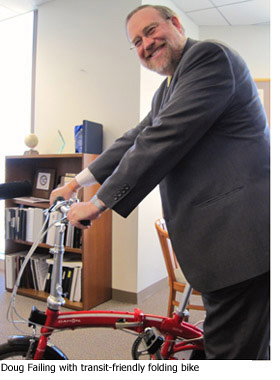 Maybe it’s because he’s a highway guy, but Doug Failing likes to move fast. Real fast. As in “I’ve-only-been-here-30-days-but-I-want-some-new-bike-policies-in-3-to-6-months” fast.
Maybe it’s because he’s a highway guy, but Doug Failing likes to move fast. Real fast. As in “I’ve-only-been-here-30-days-but-I-want-some-new-bike-policies-in-3-to-6-months” fast.
Failing is Metro’s new top highway executive, but he’s also the agency’s interim chief planning officer, and in that capacity he will kick off its first bicycle roundtable on Friday.
To get a preview of what’s in store, and to learn about Failing’s bike philosophy, we dropped by his 22nd floor office at Metro’s Gateway Plaza this week for a chat.
Here are some edited excerpts of what he had to say.
On Los Angeles’ bike-friendliness—or lack thereof
We’re in the C- area. We have a long way that we can go. We’re not a D, or in a failing grade area. We are a dense urban environment. We certainly have our challenges in that we don’t have a lot of separate facilities [bike paths] that I do see in some communities. But quite frankly you don’t need separate facilities.
L.A. is too important to not be striving towards the absolute best in everything that we need to do. We need an A-list transit system. We need an A-list highway system for cars. We need an A-list bicycle transportation system.
We need A-list pedestrian facilities. We have to get there.
On safety and coexistence on the streets
I think the biggest issue that we need to deal with is just overall public education so that our greater [body of] citizens recognize the important role that bicycles play and that they are allowed on streets.
They have rights and they have responsibilities. Both groups–the bicyclists as well as the drivers and pedestrians–all need to know their various rights and responsibilities as they’re commuting.
We’re not at a point where we’re going to create a whole series of new [bike paths.] We will do some new [bike paths], and those are important. But those will only go to a few specific locations.
And bicycles, like people, need to go everywhere. So we need to have methods to get everywhere.
I very much believe in the safety education piece of it. And the coexistence is happening, like it or not, so let’s get over that piece of it and get down to the safety education piece of it.
On where his agency fits in
Metro has a strong role. Our role is to make sure we have a cohesive master plan that covers our entire county.
And more than just the planning, we are a funding source.
So we have money available, which is never a bad thing when you’re trying to get things done.
On how it all fits together
I am a firm believer in a holistic look at how transportation occurs and how our communities develop.
There’s a place for everyone. We all have to be at the table.
On getting things done
I’ve been here 30 days. So I think I should give it more than 30 days. I’d like to see us be able to formulate some good solid policies in the next three to six months…That should be plenty of time.
On the roundtable
Friday’s roundtable for me is the beginning of a better conversation.
I’m hoping that we see a mix of people that can speak on behalf of the casual riders–the more pedestrian, suburban type users–not just the hardcore commuter types, who are important as well.
On his own two wheels
Riding on my street in front of my house—I’ve done that within the last three or four months As far as taking the bicycle out with the family and doing some riding on a bike path, it’s been a couple of years for me.
I’m not gonna be a bicycle commuter. Ain’t gonna happen with me.
I’m more interested in my weekend trips, quite frankly. Of the things I do in my own local community. There’s a lot of stuff that’s really close by the house that I don’t have to fire up the SUV and go truckin’ over to do.
I know the old Schwinn I had as a kid, which was single speed, got me everyplace. And I spent a lot of time on a bicycle as a kid. I think we all did. But there’s a lot more to it than there was back when I was a kid.
Posted 2-18-10
MTA board looks at Regional Connector alternative
February 18, 2010
An alternative design for the Regional Connector Transit Corridor project will come before the Metropolitan Transportation Authority Board at its meeting next week.
The Regional Connector, which is receiving Measure R funding, will help Gold Line, Blue Line and eventually Expo Line commuters make seamless connections across the region.
The design alternative, which would go underground in Little Tokyo, is being recommended by Metro staff to be included for study as part of the project’s environmental review process.
The MTA board meets at 9:30 a.m. on Thursday, Feb. 25.
Posted 2-18-10
What’s up with the 405 project?
February 18, 2010
A community meeting has been scheduled for Tuesday, Feb. 23, to provide updates on the project to add a carpool lane to the northbound 405 through the Sepulveda Pass.
Learn how the work is going—despite a series of rain delays just as work began—and find out what’s coming next.
The meeting will be held at The Getty, from 6-8 p.m. Full details are here.
Posted 2/18/10
Let’s fix this elections mess
February 18, 2010
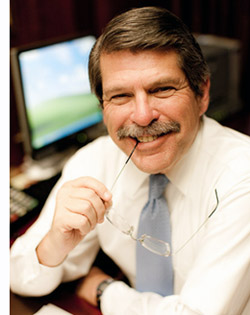 Voters in parts of the San Fernando Valley may cast ballots four times this year for the same office–with two of those votes coming in a single day.
Voters in parts of the San Fernando Valley may cast ballots four times this year for the same office–with two of those votes coming in a single day.
No one loves elections more than I do, but we all know it’s possible to get too much of a good thing.
This bizarre case of election overkill going on now in the 43rd Assembly District is the latest manifestation of the growth of special “vacancy elections” in Los Angeles County and throughout California.
The need for these extra elections is driven by term limits, as termed-out officials leave one post early after winning election to the next. And it’s becoming clear that the increasing need for such elections saddles taxpayers with burdensome costs and runs the risk of driving up voter fatigue and apathy.
Ground zero right now is the 43rd District, which includes Glendale, Burbank and a slice of the San Fernando Valley. Voters there are preparing to go to the polls on April 13 to pick a successor to serve out the final months of the Assembly term of Paul Krekorian, who left to join the L.A. City Council.
And April 13’s election is just the beginning. If no candidate gets a majority that day, there’ll be a runoff on June 8.
But it just so happens that June 8 is the same day as the regular primary election, in which there’ll be –you guessed it – a second slate of candidates on the same ballot vying to win the next two-year term that begins in December.
So in effect, voters would have to make a short-term pick and a long-term pick on the same ballot. And the list of names may well overlap. Talk about confusing.
This ordeal-by-ballot-box would finally end in November, when exhausted voters could select Krekorian’s long-term successor in the general election.
There are two basic problems with this system. It does a disservice to taxpayers by driving up cost. The April 13 vote, for instance, may cost us an extra $1 million. And it does a disservice to voters because holding elections at unexpected times of the year depresses turnout.
So what’s to be done? If we could fix the problem locally, we would. But it’s state law that dictates how and when elections are run, and the county can’t unilaterally make improvements. The onus is on the Legislature and the governor.
One place they could start is by doing a better job of covering expenses related to the elections. The state does cover some costs, but the current system is cumbersome and reimbursement is spotty. We in Los Angeles County have paid more than $12 million for special vacancy elections in the past decade, but only got about $4 million back from the state. That needs to change. So earlier this month State Sen. Curren Price introduced a bill that would guarantee future payments in all special elections.
Clearly, though, for most taxpayers the bigger issue is not who foots the bill, but how to fix the underlying issues that got us here.
And for some fresh thinking on that, we need look no further than our own Registrar-Recorder/County Clerk, Dean C. Logan.
Logan, a nationally-recognized expert on election policy and reform who’s been supervising L.A. County elections since he was appointed to his post in 2008, argued persuasively for change in an opinion piece this week in the Los Angeles Times. I completely agree with his contention that by holding too many special elections we drive up both taxpayer costs and voter discontent.
His suggestions for solutions range from holding special elections only on already scheduled election dates to instant-runoff voting. There’s even the option of using a hybrid system, as some states do, to allow short-term appointments to fill vacancies until consolidated elections can be held.
Personally, I’m not yet certain which of these suggestions will ultimately be most effective. But I’m sure of one thing. In a time of strained county budgets and alienated voters, doing nothing is not an option.
Posted 2/18/10
County bike plan workshops set
February 18, 2010
L.A. County’s bikeway master plan is getting a makeover, and the first in a series of community workshops will begin soon.
The objective is to “expand and connect the County network of bikeways, expand existing County-maintained
bicycle facilities, and develop a prioritized list of projects.”
The public workshops will be held in a variety of sites, from Baldwin Park to Topanga, in February and March.
A veteran’s plight—and a plan to help
February 17, 2010
Army supply clerk Ebony Pittman returned from Iraq last February after a 10-month tour of duty at a Special Forces base in Balad.
By September, she was sleeping in her car on the streets of L.A.
Pittman was 23. She’d served her country honorably for more than three years. She had a high-school diploma. But she found that re-entry into civilian life in Los Angeles was nearly as full of pitfalls as her tour of Iraq.
“I thought, ‘I’m ‘Army strong.’ I don’t need anybody’s help,” Pittman recalls. “I was just really frustrated, and I didn’t know what to do.”
To help returning veterans like Ebony Pittman, the Board of Supervisors approved a proposal at its meeting Tuesday to create four new positions to advise veterans on matters of mental health, substance abuse, homelessness and legal and family issues. The aim is to use the advisors to assist returning veterans with the sometimes tumultuous transition to civilian life.
The advisors will join a new Veteran Systems Navigator program, designed to assist those returning from “combat to community,” including vets straining to reintegrate. The new program aims to help about 3,000 returning veterans–some as young as Pittman, others in their 30s and 40s—as they get back to civilian life.
With the influx of veterans from Iraq and Afghanistan, there is an increasing need for counseling and other mental health care, according to county officials. The caseload at the county’s Department of Military and Veterans Affairs has risen 39 percent since last year, “and current staff cannot handle this mental health issue,” DMVA director Joseph N. Smith wrote Supervisors in a letter supporting the expansion of the navigator program.
The new advisors, whose positions will be funded by California Proposition 63 (Mental Health Services Act of 2004), will help vets navigate the federal Department of Veterans Affairs as well as services offered by the county and state, Smith says. Smith, a retired Marine colonel, says “there are more needs than the VA can handle.”
Together with an existing staffer, the hires would allow the department to spread the system navigators throughout the county. Funding for the four positions will be transferred from the county’s Department of Mental Health.
The difficulties of re-entry for today’s service men and women will be the subject of a March 1 conference for providers and policy-makers co-hosted by the County Department of Mental Health, the Veterans Affairs Greater Los Angeles Healthcare System and the VA Desert Pacific Mental Illness Research, Education and Clinical Center at the Brentwood Theater on the VA campus in West L.A.
Pittman’s problems began soon after she mustered out of the Army in May and returned to L.A. from the army base in Colorado where her unit was stationed. She struggled with depression, exacerbated, she thinks, by memories of an Army friend who’d killed himself in Iraq. She hasn’t slept more than a few hours a night since her return.
She also is haunted by the faces of Iraqi victims of a suicide bomber she saw at the base morgue. “I still see them every day,” she says.
Pittman grew up as a foster child in Los Angeles and has few family resources to fall back on.
For a few months, Pittman had a place of her own, but she couldn’t find steady work and lost her apartment after her slim savings ran out. She began crashing with friends and relatives, but nothing worked out well.
“I didn’t like feeling like a burden to anybody,” she says.
And most of her personal belongings were stolen in a pair of burglaries, including a television, her service body armor, jewelry, clothing, shoes and a laptop computer.
By fall, she had crammed her remaining possessions into her Dodge Charger and began sleeping nights in the front seat.
Pittman began to turn herself around while still on the street. She started last fall by getting psychological counseling at the VA hospital in West Los Angeles.
Pittman also signed up for a housing voucher from the federal Department of Housing and Urban Development’s subsidized housing program for veterans that she learned about from a friend. She’s now apartment hunting, getting referrals from the Venice-based St. Joseph Center, a social services provider that may also help her with a deposit.
Since Thanksgiving, Pittman has been living with a relative in Los Angeles, an arrangement that she believes will work well until she secures her own place. And late last year, she found a new job, as a telemarketing sales rep for a satellite television provider. With an income and the prospect of a new place, she’s thinking ahead to starting college under the GI Bill. She wants to study forensic science and perhaps become a police officer.
Providing help to veterans like Pittman should get a little easier thanks to the new county program passed Tuesday. In some cases, the help might be as simple as connecting them with veterans’ education benefits. In other cases, a vet in trouble may need to connect with services ranging from mental health care to unemployment insurance, family counseling or legal assistance.
Overcoming pride and asking for help was a crucial first step, Pittman believes. “You do need help,” she says, “and that’s okay.”
Posted on 2/16/10
An “iconic” park gets ready to bloom
February 16, 2010
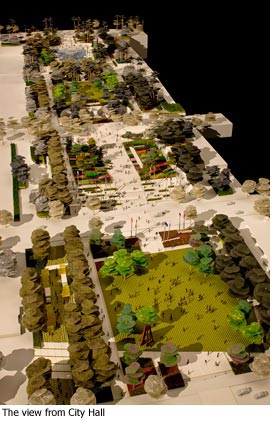 Construction of a 12-acre park envisioned as a “spectacular community gathering space” in downtown Los Angeles is set to begin this spring, under an agreement adopted Tuesday by the Los Angeles County Board of Supervisors.
Construction of a 12-acre park envisioned as a “spectacular community gathering space” in downtown Los Angeles is set to begin this spring, under an agreement adopted Tuesday by the Los Angeles County Board of Supervisors.
The Civic Park, part of the stalled Grand Avenue Project, would be built on county land running from the Music Center on Grand Avenue to City Hall on Spring Street. The $56 million project will be built on land leased by the county to the developer, The Related Companies. As part of the original agreement between the two parties, Related pre-paid some of the leasehold rent on the condition that the funds would be used to build the park and not for any other purposes. Once the park is finished, the county will have the option to purchase the property back for $1.
The project “will remake an often overlooked public space into a spectacular community gathering space that will provide an iconic park for Los Angeles,” according to a Chief Executive Office letter to supervisors asking for authorization to move ahead.
Models of the planned park depict a sweeping expanse of trees and lawns, along with plaza and terrace spaces, a dramatic fountain and a striking view toward Los Angeles’ equally iconic 1928 City Hall.
“This could be the jewel for all downtown,” Russell Brown, president of the Downtown L.A. Neighborhood Council, told the board during public comments before the vote.
The board voted 4-1 to move ahead with the park. Supervisor Michael D. Antonovich objected, citing concerns about delays in the project and reservations about the county’s agreement with Related.
With their vote, the supervisors authorized CEO William T Fujioka to sign a “lease lease-back” document and other agreements with developers, and to begin discussions on programming, operations and maintenance of the park with the Performing Arts Center of Los Angeles County.
Construction is expected to take two years, concluding in the summer of 2012.
The park will have four distinct areas: fountain plaza, performance lawn, community terrace and event lawn.
The historic Arthur J. Will Memorial fountain will be restored, and, if funds permit, “multi-cultural botanic gardens” will be added in the community terrace area to showcase plants from more than 100 “biozones” around the globe—each representing a culture present in modern day Los Angeles.
The park also will include a children’s garden and an event staging area that can accommodate community markets.
“Programming for small to large events and festivals is a crucial cornerstone of the planning of the park,” the CEO’s letter said. It noted that the park must support a range of “formal” uses such as concerts, as well as informal activities like strolling, reading and picnicking.
The developer aims to turn the steep grade of the four-block site into an asset, using “generous amphitheater steps and planted terracing” to create ADA-accessible pedestrian ramps and seating spaces.
The project will require demolition and re-engineering of ramps into the County Mall garage from Grand Avenue, relocating ramps into the Clara Shortridge Foltz Criminal Justice Center, shifting the placement of flags now located in the Court of Flags, and demolishing a surface parking lot.
Civic Center coffee aficionados, take note: the project site will be largely off-limits during construction, except for emergencies, facility maintenance and “access to Starbucks.” The Starbucks stand eventually will be demolished and the cafe relocated to a new, one-story building on the fountain plaza level, along with ATM facilities, public restrooms and park support offices.
Posted 2/16/10
Growing the Orange Line
February 16, 2010
The Orange Line is going places.
Brutoco Engineering & Construction, Inc. has been selected to design and build a four-mile northerly extension of the Orange Line from Warner Center to Chatsworth.
The busway currently runs from Warner Center to North Hollywood, where riders can catch the Red Line subway to Downtown L.A. or points beyond.
The Orange Line has been a hit with riders—currently carrying more than 20,000 each weekday, triple the number originally envisioned when it opened in 2005—and the extension seeks to build on that popularity while expanding transportation “connectivity” within the area.
The Orange Line extension project includes four new stations, to be located at Sherman Way, Roscoe Boulevard, Nordhoff Street and the Chatsworth Metrolink Station.
Other elements of the extension include new platforms at Canoga Station and an elevated bridge over railroad tracks at Lassen Street. In addition, the project includes a bicycle/pedestrian path connecting to an existing path at Brown’s Creek, a park-and-ride lot at the Sherman Way Station, expanded parking at the Chatsworth Metrolink Station, bridge crossings over the Los Angeles River and Santa Susana Wash, a satellite bus parking facility, and landscaping and street improvements.
The extension is expected to open in the summer of 2012.
The $82.5 million design build contract awarded to Brutoco is the first to be funded by Measure R, the half-cent sales tax passed by voters in 2008. The overall budget for the extension project is $215.6 million.
Read our earlier story on the Orange Line here.
Posted 2/16/10
Beach forecast: Sunny, splash of color
February 15, 2010
Break out the Ray-Bans. Los Angeles County’s lifeguard towers are about to undergo a Technicolor summer explosion.
From May to September, county lifeguard towers from Palos Verdes to Venice to Malibu will bloom with bright images of golden fish, blue flowers and psychedelic patterns of green, yellow, purple and pink.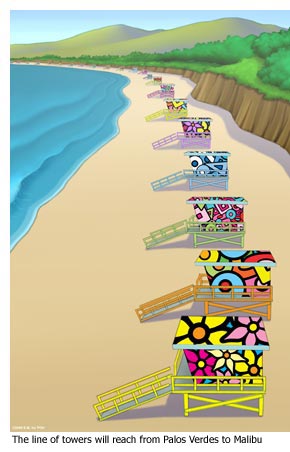
The public art display, “Summer of Color – Lifeguard Towers of Los Angeles,” is the brainchild of Bernie and Ed Massey, who run the non-profit arts and education group Portraits of Hope.
The artists applying the colorful acrylics: thousands of L.A. area children and adults from schools, shelters, hospitals, after-school programs and Scout groups. On a recent morning, young students from Palisades Elementary School pitched in, painting bright colors on some of the 1,800 pre-cut plastic panels that will be fastened to the towers this spring.
About 150 of the iconic towers will get the makeover. The project may be the most eye-catching display to hit the sand since “Baywatch.” But it’s not just a decorative addition to the beaches, which are visited by 45 million people annually. As part of the program, which is funded with private donations, students will also get an education in civic issues and problem-solving. There’s a broader social objective, too.
“We want people to recognize the power of collaboration,” says Bernie Massey. “Seeing all of the towers transformed will become a great unifying symbol for people all over Los Angeles County.”
Launched in 1995, Portraits of Hope started by wrapping the oil well on Olympic Boulevard near Beverly Hills High School with bright panels. Since then, they’ve brightened up New York City taxicabs with their trademark vibrantly colored graphics, as well as New Orleans schools, NASCAR racers, and even a blimp.
The Masseys are partnering on the project with L.A. County’s Beaches & Harbors Department, which donated temporary studio space in Marina del Rey, and the Lifeguard Division of the county Fire Department. The lifeguards had only one major demand.
No red paint.
That’s the color of the lifeguards’ signature jackets and swimsuits—and for safety’s sake, not a great color for a beachfront art installation.
If you’d like to help apply the rainbow of other colors the project will be using, drop Portraits of Hope an e-mail.
Posted 2-16-10




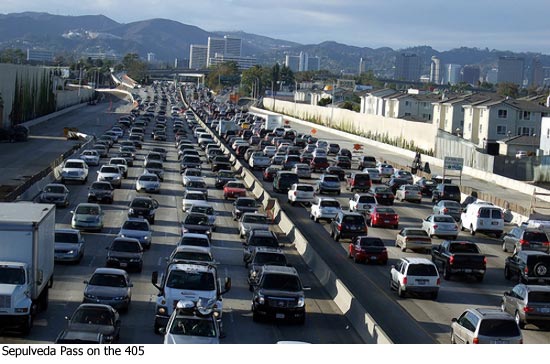
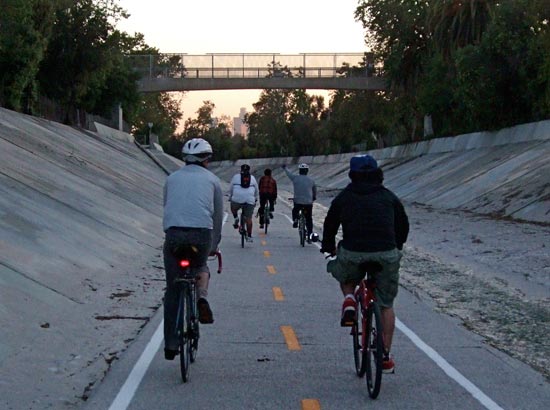
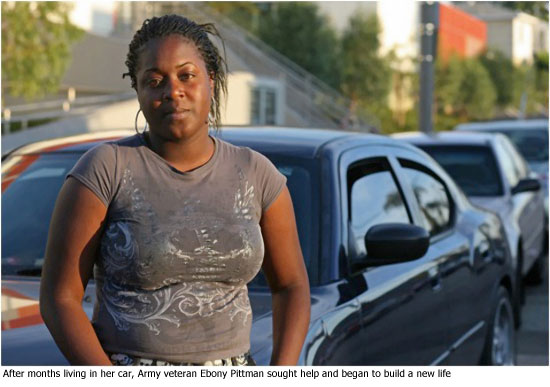
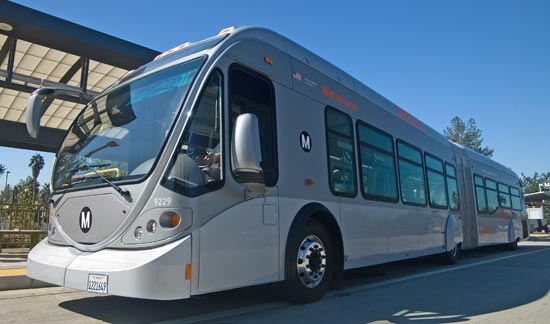
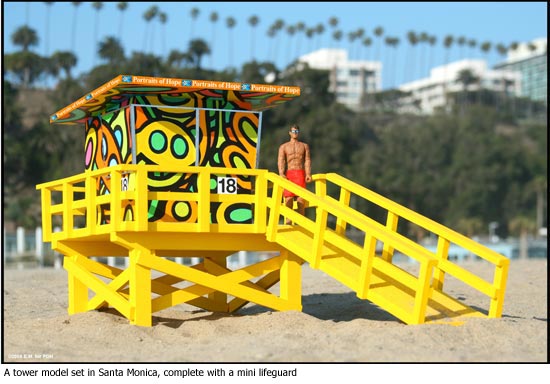















 Check for the latest closure information
Check for the latest closure information








